Best Goat Cheese Types in the World
Chavignol is a small cheese made from raw goat's milk that must weigh at least 60 grams. Its color is white or ivory and it has a dense, moist texture with a thin, moldy rind on the outside. The flavor of Chavignol is full, slightly nutty and 'goaty'.
It can mature for up to three months, and when the rind drastically changes its color and becomes very hard, and the body becomes drier and crumbly, the origin of its name - crottin, meaning horse dung in French, is explained. Chavignol is great when grilled and served hot on a salad or eaten with bread and bacon.
This semi-hard cheese is traditionally produced from sheep or goat milk, or a mixture of the two. The milk used to make this cheese comes from breeds reared traditionally in the Messinia and Lakonia prefectures, where this cheese has been produced for more than 100 years.
To make Sfela, the curd has to be divided into pieces and reheated. Afterwards, the pieces are drained using cheesecloth, and they are lightly pressed and cut into small strips ('sfelas') and salted. The strips are stored in tin cans full of brine for at least three months to mature.
Kefalotyri is a traditional Greek-Cypriot cheese made from goat’s or sheep’s milk. It has a firm and flaky texture with irregular eyes and a strong, rich aroma, while the flavors can best be described as salty, strong, tangy, sharp, and spicy.
It is believed that kefalotyri is the predecessor of most hard Greek cheeses, since it dates back to the Byzantine era. There are two main varieties – young kefalotyri, aged for a minimum of 2-3 months, and aged kefalotyri, which is aged for at least one year and has a much stronger flavor.
Picodon is a small, round cheese made from goat's milk, with a minimum weight of 60 grams, produced in the Ardéche and Drôme regions in France. Its rind is thin, with yellow or white mold speckled with blue on the exterior.
The maturation period is at least 14 days. On the inside, it is white or yellow, with a fine texture that becomes crumbly if it is matured for a longer period of time. Its flavor is fresh and clean, with a balance of salty and acidic notes, but it gets concentrated and sharp if it is matured longer, when the cheese loses half of its mass by drying out.
THE BEST Picodon Cheeses
This hard cheese is made from raw goat milk taken from Serrana breed. Goat cheese has long played an important role in the economy of the Bragança region, and many of the local families raise animals and produce cheese as their main source of subsistence.
Once the goats are milked, the milk is filtered and heated. The curd is then salted and cured at a low temperature and high humidity. Transmontano cheese is round with a semi-hard crust, and is uniform, smooth, and white. It is a firm cheese with an intense and pleasant aroma and a slight spicy note.
This semi-hard cheese has been produced from goat or sheep milk, or a blend of the two, in the town of Arachova below mount Parnassus in central Greece for at least a century. The milk is taken from breeds which have adapted to the mountainous region, and their diet is based on local herbs and plants.
The cheese is curdled, and the curd is divided and put into special molds or baskets, where it is salted and dried. The cheeses have a compact structure, a characteristic cylindrical shape, a pale yellow color, and a striped appearance that results from the reed mats on which they are placed to dry. Formaella Arachovas Parnassou is a cheese with a very pleasant taste and aroma, and it is usually eaten plain or either fried or grilled as an ingredient in typical regional dishes.
Myzithra is a traditional cheese made from the whey of goat’s or sheep’s milk cheeses. It comes in three main varieties: fresh, sour, and aged. The fresh one is soft in texture and unsalted, typically shaped into eggs or balls.
Its aroma is pungent, while the flavor is quite mild. Sour myzithra is prepared with sheep’s or goat’s milk, yeast, and salt, while the aged variety is hard in texture and very salty. The first two varieties are often used in baked pastries and desserts, while the aged variety is best when grated over pasta, soups, and casseroles.
Pair with
THE BEST Myzithra Cheeses

Caprino is a goat’s milk cheese made throughout Italy - the name derives from the Italian word capra, meaning goat. There are two main varieties of caprino: fresco (fresh) and stagionato (aged). A fresh version is aged for two to four days, it has a nice, soft, creamy texture and round or cylindrical shape.
Aged version is left to mature up to 6 months and during that period the cheese develops much saltier, tangier flavor and turns the color from white to yellow, sometimes even reddish. Caprino can be enjoyed on its own, served with fruit, or as an ingredient in first courses or salads.
VARIATIONS OF Caprino
THE BEST Caprino Cheeses
Tulum peyniri is a Turkish cheese made primarely from goat's milk. It is primarily produced in the country's mountainous regions. The cheese is white in color, has a creamy texture, and its flavors range from mild and slightly sweet to strong and somewhat bitter.
It is recommended to serve it drizzled with olive oil and pair it with fruit, figs, olives, and fresh vegetables.
THE BEST Tulum Peyniri Cheeses
Manouri is a silky smooth fresh whey cheese made exclusively in the areas of Central and Western Macedonia and in Thessalia. It is a particular type of unsalted myzithra cheese known from the Byzantine period. Manouri produced in the province of Mplatsi in Macedonia is considered to be one of the best and it is made by adding milk and cream to the whey of sheep's or goat's milk, or a mixture of the both derived from hard cheese production, usually from making feta cheese.
Although it is quite soft, it is firm enough to be sliced. Its flavor is similar to feta, but this cheese is less salty and more creamy. It is described as having a milky, slightly sour aroma. This cheese, cylindrical in shape, is also known as Manoypi.
Pair with
Best Goat Cheese Producers in the World
Fromagerie L'Amuse is a renowned and respected cheese shop based in the Netherlands, with locations in Amsterdam and IJmuiden. L'Amuse was founded in 1989 by Betty Koster, a top cheese expert, specialist, and educator. Over the years, L'Amuse has built a reputation as one of the leading destinations for fine cheeses in the Netherlands.
The shop specializes in Dutch cheeses as well as carefully selected international varieties. L'Amuse offers a wide range of cheeses, including both hard and soft cheeses, goat's and cow's milk cheeses, as well as some rare and exotic types. L'Amuse also offers professional cheese tastings, where participants can learn about different types of cheeses, their history, production methods, and how to pair them with wines and other accompaniments.
Beemster is a cheese producer based in the Netherlands, known for its premium Dutch cheeses that are made from milk sourced from local farms. The company, named after the polder Beemster in North Holland, was founded in 1901. Beemster cheeses are characterized by their rich flavors and creamy textures, achieved through traditional methods and aging processes.
Their range includes varieties such as Gouda, aged Gouda, and flavored cheeses. The brand is committed to sustainable practices, including animal welfare and environmental protection.
AWARDS

World Championship Cheese Contest - Best of Class
2024, 2022, 2020, 2016, 2014, 2012
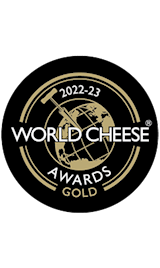
World Cheese Awards - Gold
2024, 2023, 2022, 2021
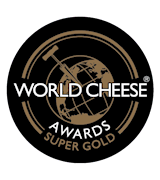
World Cheese Awards - Super Gold
2024
BEST Beemster Cheeses
Jasper Hill Farm is a cheese producer located in Greensboro, Vermont. The company specializes in creating high-quality cheeses with a focus on local production and sustainable agricultural practices. Jasper Hill provides aging and affinage services and develops cheeses that showcase the dairy culture of Vermont.
They work closely with small local dairies to produce a variety of cheeses, incorporating unique aging environments to enhance flavor and texture.
AWARDS
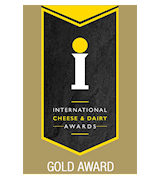
International Cheese Awards - Gold
2022, 2019

World Championship Cheese Contest - Best of Class
2024, 2022, 2020, 2018, 2016, 2014, 2012, 2010

World Cheese Awards - Gold
2024, 2023, 2022
BEST Jasper Hill Farm Cheeses
Sartori Cheese is a brand specializing in the production of high-quality cheeses with a particular emphasis on artisanal and hand-crafted products. Founded in a small business in Wisconsin, Sartori quickly became known for its innovative production techniques and unique, rich flavors of cheese.
The brand offers a wide range of cheeses, including various types of hard cheeses as well as cheeses with added spices and herbs, enhancing every bite. Sartori is renowned for using the finest milk from local farms in its production process, creating cheeses that not only meet high taste standards but also provide a richness of textures and aromas that develop over time.
AWARDS
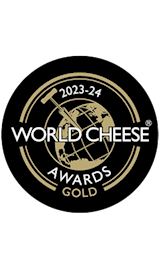
World Cheese Awards - Gold
2023
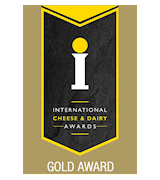
International Cheese Awards - Gold
2024, 2023, 2022, 2019

American Cheese Society Judging & Competition Awards - 1st Place
2024, 2016, 2015, 2014, 2012, 2011, 2010, 2009, 2008, 2007
BEST Sartori Cheese Cheeses
Fromagerie Moléson is a renowned Swiss dairy located in Orsonnens, in the Fribourg canton, producing a wide range of traditional and innovative dairy products. It was founded with the mission to preserve and enhance Swiss dairy traditions while providing high-quality products that meet modern standards.
Fromagerie Moléson offers a broad assortment of premium dairy products that cater to various tastes and consumer needs. In addition to producing highly valued dairy products, Fromagerie Moléson is also involved in retail through its Crèmerie du Gibloux, where customers can enjoy a rich selection of fresh products.
AWARDS

World Championship Cheese Contest - Best of Class
2018, 2014
Queso Payoyo is a producer of premium, handcrafted cheeses made in the heart of the Sierra de Grazalema Natural Park, in the small Spanish village of Villaluenga del Rosario. The company was founded in 1997 and has since won numerous awards for the quality of its cheeses.
Payoyo produces cheeses made from goat, sheep, and mixed milk, all of which are characterized by rich flavors and authentic production techniques. The Payoyo brand was registered in 1995 and has since become a recognizable name in the cheese market.
AWARDS

International Cheese Awards - Gold
2022, 2019

Concours International de Lyon - Gold
2025

Great Taste Awards - 2 stars
2024
BEST Queso Payoyo Cheeses
LaClare Creamery is a family-owned goat cheese producer known for its passion for creating high-quality, distinctly flavorful goat cheeses. Located in Malone, Wisconsin, LaClare Creamery is committed to producing premium cheeses from fresh, clean goat milk.
The company blends traditional cheesemaking techniques with modern innovation to craft cheeses with rich, complex flavors. Their product range includes a variety of goat cheeses, from creamy chèvres to hard cheeses, all made with the utmost care and attention to detail.
AWARDS

World Championship Cheese Contest - Best of Class
2024, 2022, 2018, 2014

American Cheese Society Judging & Competition Awards - 1st Place
2024, 2023, 2019, 2018, 2015, 2011
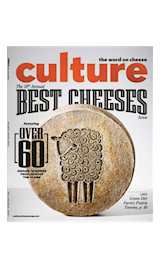
Culture Cheese Magazine Best Cheeses issue - Best
2023
BEST LaClare Creamery Cheeses
Pennyroyal Farm is a farm located in Boonville, California, offering a combination of goat dairy products, wine, and farm experiences. The farm is known for its creamery, producing artisan cheeses, and its vineyard, which grows grapes for estate wines.
The farm also hosts tasting rooms and farm tours, providing visitors with a hands-on farm-to-table experience. Pennyroyal Farm prides itself on sustainability, offering unique events and special pairings featuring estate wines and cheeses. Their cheeses are crafted using milk from their herd of Nigerian Dwarf goats and Alpine goats, which are known for their high-quality milk and distinct flavor profiles.
AWARDS

International Cheese Awards - Gold
2024, 2023

Culture Cheese Magazine Best Cheeses issue - Best
2023

American Cheese Society Judging & Competition Awards - 1st Place
2022, 2013
BEST Pennyroyal Farm Cheeses
Andante Dairy is a family-owned dairy farm located in California, specializing in the production of high-quality artisan cheeses. Founded by Mary and David G. Owens, its mission has been to create cheeses that not only captivate the taste but also reflect the uniqueness of California milk.
Andante Dairy offers cheeses made from both cow's and goat's milk, with all cheeses being handcrafted with care and precision. The company takes pride in its small, controlled production processes, combining traditional techniques with innovation.
This approach allows them to create cheeses with perfect textures and rich, distinctive flavors that reflect the quality of the milk they use.
BEST Andante Dairy Cheeses
Originally focused on making artisanal cheese and butter, the company has become well-known for its high-quality dairy products, including goat cheese, cultured butter, and crème fraîche. Vermont Creamery sources its milk from local family farms, ensuring sustainable and ethical practices.
The creamery has been a pioneer in the American artisan cheese industry and was acquired by Land O'Lakes in 2017, a move that helped it expand its reach and continue its growth.
AWARDS

World Cheese Awards - Gold
2023, 2022

World Championship Cheese Contest - Best of Class
2024, 2022, 2020, 2018, 2016, 2012, 2010

International Cheese Awards - Gold
2024, 2023
BEST Vermont Creamery Cheeses
Best Goat Cheeses in the World
Bonne Bouche is an acclaimed aged goat cheese produced by Vermont Creamery in Websterville, Vermont, USA. This cheese is known for its distinctive ash-ripened rind that develops a creamy and robust flavor as it ages. Initially aged for 10 days, Bonne Bouche can continue to mature for up to 90 days, becoming softer and more piquant over time.
It's made from pasteurized goat's milk sourced from small family farms, both local and Canadian, and is celebrated for its wrinkly, geotrichum-rind, giving it a unique texture and appearance.
AWARDS

World Cheese Awards - Gold
2022

American Cheese Society Judging & Competition Awards - 1st Place
2018, 2013, 2010, 2001
Bijou is a type of aged goat cheese produced by Vermont Creamery, known for its artisanal dairy products. Bijou, meaning "jewel" in French, reflects the small, precious nature of this cheese. It is characterized by its delicate, wrinkled rind and creamy, dense interior that becomes more complex in flavor as it ages.
Typically, Bijou has a mildly tangy, slightly sweet taste with earthy undertones, making it a versatile option for cheese boards, salads, or cooking. The cheese is hand-rolled and aged to ensure consistency and quality, showcasing the creamery’s dedication to traditional cheese-making techniques.
AWARDS

American Cheese Society Judging & Competition Awards - 1st Place
2019, 2016, 2015, 2014
Cornish Blue is a semi-soft blue cheese made by The Cornish Cheese. It is known for its mild, creamy flavor and buttery richness, which sets it apart from traditional blue cheeses that typically have a salty tang. With a dense texture and gentle sweetness, this cheese is perfect for those who enjoy a more subtle blue cheese experience.
Cornish Blue is designed to be eaten as a young cheese and is suitable for vegetarians. It has received numerous prestigious awards, including the World Cheese Awards Super Gold and the Great Taste Awards Gold. It is recommended to serve Cornish Blue at room temperature to fully appreciate its flavors.
AWARDS

International Cheese Awards - Gold
2023
AWARDS

International Cheese Awards - Gold
2024, 2023, 2022
Vermont Goats' Milk Feta, made by Vermont Butter & Cheese Creamery, is a type of feta cheese crafted primarily from fresh, high-quality goats' milk. This cheese is known for its creamy yet crumbly texture and its tangy, slightly salty flavor profile, which makes it versatile for various culinary applications such as salads, sandwiches, and Mediterranean dishes.
This artisan cheese is produced in small batches, ensuring close attention to detail and quality.
AWARDS

American Cheese Society Judging & Competition Awards - 1st Place
2016, 2014, 2012, 2004
Queso Semicurado de Cabra y Oveja Payoyo is an exceptional cheese from the heart of the Andalusian region of Spain, specifically from the small village of Villaluenga del Rosario, within the Sierra de Grazalema Natural Park. This cheese is handcrafted using carefully selected milk from Payoya goats and Merina Grazalemeña sheep, which gives it a unique, rich, and well-balanced flavor.
Payoyo cheese is known for its authentic taste, a result of the tradition and dedication of the local cheesemakers. This semicurado cheese is semi-aged, meaning it is mature enough to develop a wealth of flavors while retaining a softer, creamier texture compared to fully aged cheeses.
AWARDS

Concours International de Lyon - Gold
2025

World Cheese Awards - Super Gold
2024
Fig & Honey Goat Cheese made by LaClare Creamery is a type of cheese that combines the savory flavors of goat cheese with the sweet and fruity notes of figs and honey. This artisanal cheese offers a creamy texture and a delightful balance of tanginess from the goat cheese and sweetness from the added ingredients.
Crafted by LaClare Creamery, a well-known producer of premium goat cheeses, the Fig & Honey Goat Cheese is often enjoyed on its own, paired with crackers, or used in various culinary dishes to enhance flavors.
AWARDS

American Cheese Society Judging & Competition Awards - 1st Place
2023

Culture Cheese Magazine Best Cheeses issue - Best
2023
Crema de Queso de Cabra is a gourmet product crafted by Queso Payoyo. It combines the rich, tangy flavors of Payoya goat's milk cheese, which is known for its unique creaminess, with the sharpness of blue cheese. This creates a balanced and luxurious spread that is highly versatile in culinary applications, ranging from simple bread spreads to more elaborate recipes.
The Payoya goat's milk cheese is made from the milk of the Payoya goat, a breed indigenous to the Andalusian region in Spain, renowned for its high-quality milk.
AWARDS

International Cheese Awards - Gold
2022, 2019

Concours International de Lyon - Gold
2025
AWARDS

International Cheese Awards - Gold
2024, 2023

Cup of Excellence - 1st Place
2013
AWARDS

International Cheese Awards - Gold
2024, 2023, 2022






TasteAtlas food rankings are based on the ratings of the TasteAtlas audience, with a series of mechanisms that recognize real users and that ignore bot, nationalist or local patriotic ratings, and give additional value to the ratings of users that the system recognizes as knowledgeable. For the “Top 100 Goat Cheeses in the World” list until April 17, 2025, 4,435 ratings were recorded, of which 2,199 were recognized by the system as legitimate. TasteAtlas Rankings should not be seen as the final global conclusion about food. Their purpose is to promote excellent local foods, instill pride in traditional dishes, and arouse curiosity about dishes you haven’t tried.





































































































































































































































